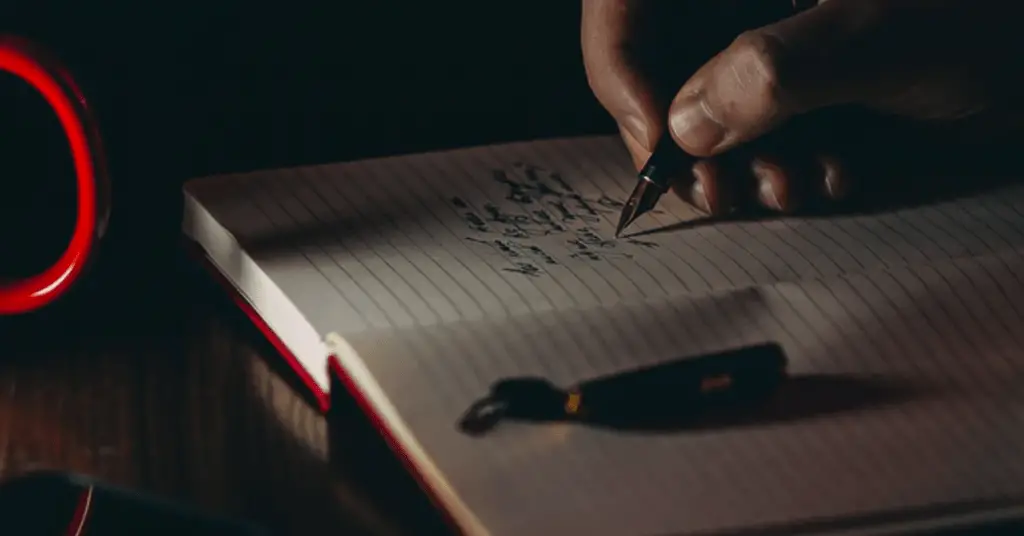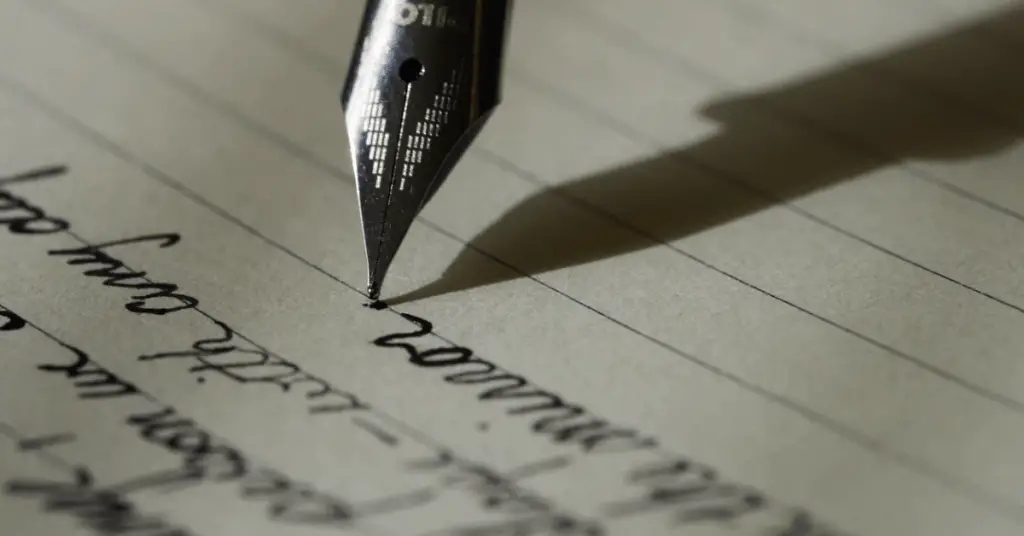The popularity of using fountain pens has been steadily increasing over the last few years with more and more people new to both collecting and using fountain pens getting involved in the space. With so many new fountain pen enthusiasts out there, we constantly see a wide range of questions being asked from people new to the community trying to get the best possible information they can.
Although we constantly see questions about fountain pens, their nibs, and suitable inks we have noticed more and more people specifically reaching out and asking if fountain pens need special paper for optimal performance. Due to this, we have decided to collect all of the relevant questions that we have seen people asking about paper for fountain pens and cover them all in todays article.
Our hope is that no matter the the price tag of your fountain pen of choice, we will be able to help you get the best possible performance out of it by ensuring you have the optimal paper for your needs. As we go through the various questions below, we will also be going over a number of different paper recommendations for particular writing situations and budgets to try and advise our readers as best we can.
Do Fountain Pens Need Special Paper
In reality, the performance of a fountain pen is dependent on a number of things that all worth together to deliver a butter-smooth writing experience for the user. The main things that factor into the performance of the pen include the nib of the pen, the nib size, the pen’s feed, the ink used, as well as the actual paper that you are writing on. We have another article going over the smoothest fountain pen nib options that may also be helpful to our readers trying to get the smoothest possible writing experience out of their pens too.
The majority of entry level fountain pens on the market will write in a very similar way no matter the paper you use due to their lower quality build to try and keep their price tags as budget friendly as possible. As you move up the price brackets though, this starts to change and even a decent beginner fountain pen will end up having different writing experiences for the user depending on the paper that you choose to use when writing.
As you would expect, better quality paper usually does offer a better writing experience when using a fountain pen with most decent fountain pens still being able to hold their ground with cheaper paper, especially if you chose a medium or broad nib for your pen. Extra fine and fine nibs on fountain pens usually end up having a scratching writing experience on cheaper paper though with some of the cheaper extra fine and fine nibs really having issues.
We then have to factor in the ink that you will be using with your fountain pen too as your ink quality has a larger impact on the performance of your fountain pen than most people think. Cheaper inks and even some of the premium quality inks can have issues with feathering, bleed, and ghosting on cheaper paper. This can not only ruin your writing experience but it can also make your notes a pain to read due to the bleed and ghosting going through the paper and causing issues.
Thankfully though, this is a quick and easy fix as decent premium fountain pen inks are usually cheaper than most people think. This can drastically improve the performance of some pens on lower quality paper as it can help to minimize feathering, bleed, and ghosting without the writer having to take any additional action.
Can You Use A Fountain Pen On Regular Paper
You can definitely use fountain pens from all price ranges on regular paper and have a good writing experience provided you take the factors covered above into consideration. As we touched on earlier in the article, decent beginner fountain pens with a medium or broad nib and a premium ink perform the best when used with regular paper and can be well worth the initial investment over a cheaper fountain pen, especially if you know you will be writing on regular or cheap paper the majority of the time.
If you are a student taking your first draft of notes for a class or using your fountain pen for work and having to sign or complete paperwork from external companies, you may be writing on regular or cheaper paper more often. If you usually use your fountain pens for personal use and have more control over the type of paper that you will be writing on, many people will opt to go with a higher quality paper rather than regular paper due to them writing for pleasure and wanting the best possible writing experience possible.
If you are looking to use a higher quality paper with your fountain pen to improve your writing experience and get a super smooth glide when writing, we would highly recommend that you try any of the following paper types:-
Although all three types of paper above do have their advantages and disadvantages over each other, they do tend to be the most commonly recommended papers from the fountain pen enthusiast community and are all considerably better than regular paper. In addition to this, you will often find that decent quality paper for fountain pens is cheaper than most people think.
What GSM Paper Is Best For Fountain Pens

When it comes to the best GSM (grams per square meter) paper for writing with a fountain pen, you will have to take a step back and think about your goals and what you want when writing with your fountain pen. Cheaper, low GSM paper will often have issues with bleed, ghosting, and feathering and can often end up having a scratchy writing experience when using an extra fine or fine nib with your fountain pen.
On the flipside of this though, the lower GSM paper does tend to be around half the price of the higher GSM paper options on the market and does have its place in the market. Sticking with one of the examples that we used above, if you are a student taking your initial notes for a class, you may want a low GSM paper to keep the costs down as you will often make a second draft of your notes after class on a higher GSM paper.
Although more expensive, in our opinion, any paper with a GSM of between 60 and 90 will be a great option for the vast majority of our readers when writing with a fountain pen for general use. Its higher GSM scoring will usually prevent any issues with feathering, bleed, and ghosting while writing and the paper tends to perform well with cheaper fountain pens as well as extra fine and fine nibs too.
That said though, some people do prefer a paper with a GSM of 100 or higher when writing with a fountain pen for the best possible results. Although this can help to deliver a smoother writing experience with crisp, clean lines when writing with a fountain pen on more expensive paper types, ink drying times will often be longer due to the higher GSM meaning it is a less absorbent paper.
This can end up causing some issues for people who are left handed as it takes longer for their ink to dry meaning that they may accidentally smear or smudge their text when writing with a higher GSM paper, even when using a fast drying ink in their fountain pen. We feel that anything between 60 GSM and 90 GSM is usually the better option as it performs well but is also cheaper making it the better option for most people.
What Makes Paper Fountain Pen Friendly
Although the GSM of the paper you will be writing on with your fountain pen is important, there are also a number of additional paper-based factors that come into play to ensure that you are getting the best possible writing experience when using your fountain pen. The general milling process of the paper definitely does come into play though as not all paper is created equally but this is often reflected in the price of the paper when opting for quality over quantity.
In our opinion, the main four factors that come into play when looking for fountain pen friendly paper are weight, density, fibers, and smoothness. You really can tell the difference when writing on premium quality paper with most fountain pen enthusiasts having their own preferences to meet their writing style, nib size, and ink choice. This is why we usually recommend that our readers try out the three paper types below if possible.
Although all three of the paper types are excellent and will definitely offer you a better writing experience than regular or cheap paper, they do each have their own subtle differences due to their unique milling processes. For example, some premium paper companies will prioritize the smoothness of their paper over the density delivering a slightly different writing experience for the end-user. Trying out a few different premium paper options can help you choose the best paper brand for your preferences and help ensure that you are getting the smoothest possible writing out of your fountain pen.
Is Moleskine Paper Good For Fountain Pens

This is without a doubt one of the more frequently asked questions when it comes to bullet journaling with a fountain pen due to Moleskine Classic Notebook definitely being one of the most popular options on the market. Although personal preference will come into it, we do feel that Moleskines paper is fine for the majority of general writing with a fountain pen. It does tend to be a smooth paper and has a GSM of 70 making it decent for minimizing ghost and bleed when writing.
Another very popular bullet journaling option is the Leuchtturm1917 that has a GSM of 80 helping to reduce bleed and ghosting even further when compared to the Moleskine bullet journals. That said though, if you are looking for the best bullet journal for writing with a fountain pen then the Paperage Notebooks would be our recommendation to our readers as their 100 GSM paper pretty much prevents any issues with ghosting or bleed while offering a very smooth writing experience.
Conclusion
That brings our article on writing on different types of paper with your fountain pen to an end. We hope that you have found it helpful and that our advice will be able to help improve your writing experience when using your fountain pen on a number of different paper types. As we have covered throughout the article, there are a number of factors that all come into play when it comes to choosing your paper for your fountain pen so our advice would be to try different paper brands and start using a premium ink to see what you prefer.